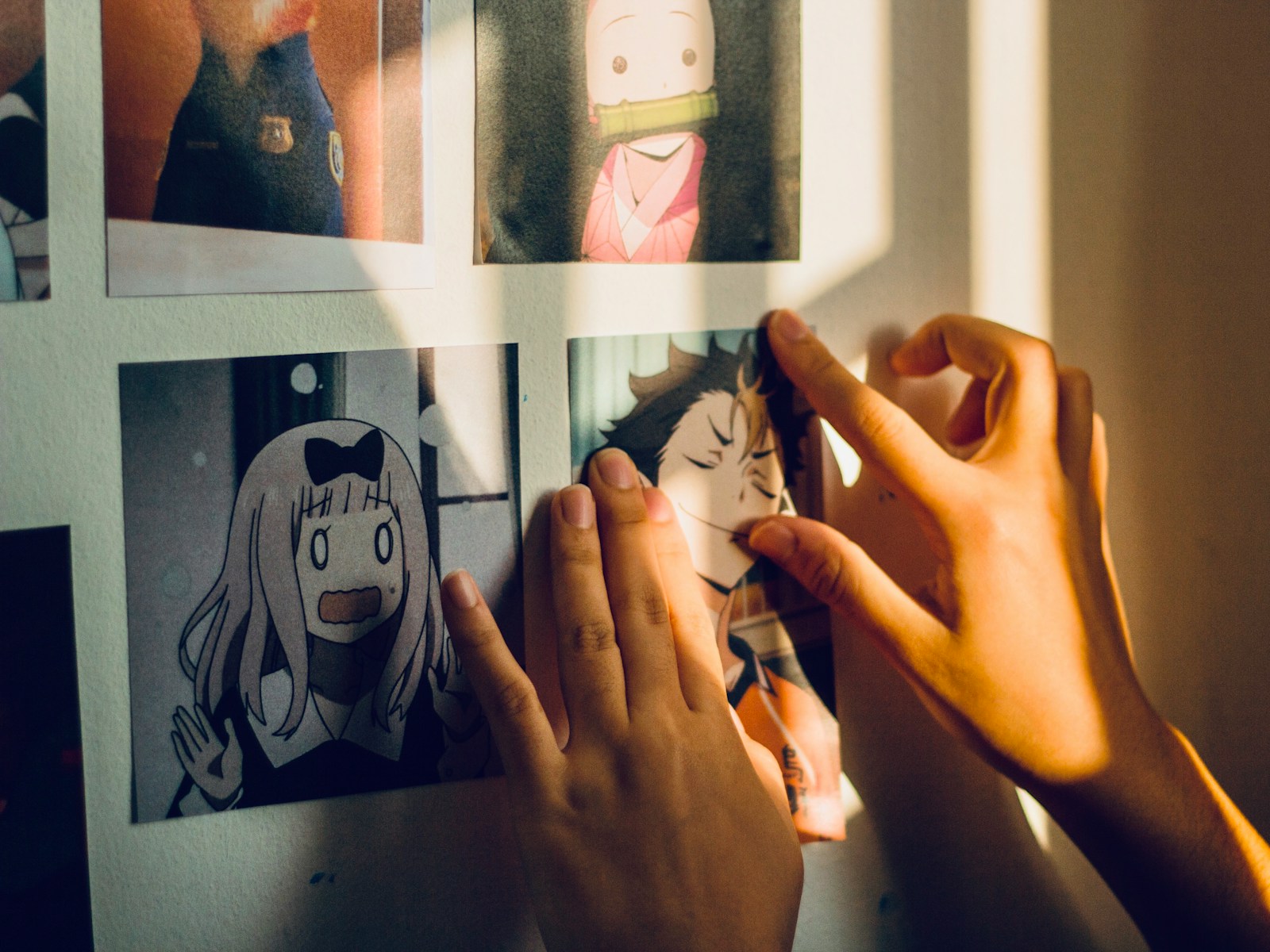The Evolution of Anime: A Brief History and Its Impact on Pop Culture
Anime, originating from Japan, has come a long way since its inception, captivating audiences worldwide and leaving an indelible mark on popular culture. This distinctive style of animation has not only evolved over time but has also garnered a massive following, with fans eagerly awaiting the latest releases. Understanding the history of anime is crucial in appreciating its impact on pop culture today.
Anime can trace its roots back to the early 20th century, with the first known Japanese animated film, “Katsudō Shashin” (also known as “The Moving Picture”), created by animator Oten Shimokawa in 1907. However, it wasn’t until the post-World War II era that anime gained significant recognition. The medium played an essential role in Japan’s post-war recovery, providing an outlet for artistic expression and commentary on social issues.
The 1960s marked a turning point for anime, with the emergence of legendary figures like Osamu Tezuka, often referred to as the “Godfather of Manga.” Tezuka’s creations, such as “Astro Boy” and “Kimba the White Lion,” revolutionized the industry. His storytelling prowess and innovative animation techniques set the stage for the modern anime we know and love today.
As anime continued to flourish, the 1980s and 1990s brought a new wave of influential titles that would become classics in their own right. Series like “Dragon Ball,” “Sailor Moon,” and “Naruto” not only captivated audiences but also helped to popularize the medium globally. These iconic shows introduced viewers to the vast and imaginative worlds of anime, complete with memorable characters and thrilling storylines.
With the advent of the internet and digital streaming platforms in the 2000s, anime’s popularity soared to new heights. Fans could now access a vast library of anime from various genres, allowing the medium to reach a wider audience. Online communities formed, fostering discussions, fan theories, and fan creations that further fueled the growth of anime’s global fandom.
Today, anime continues to push boundaries and captivate viewers through its diverse range of storytelling and animation styles. From the visually stunning works of Studio Ghibli to the thought-provoking narratives of “Death Note” and “Attack on Titan,” anime offers something for every taste and interest.
Moreover, anime’s influence extends beyond the screen, permeating various aspects of pop culture. Cosplay, the practice of dressing up as anime characters, has become a prominent feature at conventions and events worldwide. The impact of anime can also be seen in fashion trends, music, art, and even video games, where anime-inspired graphics and gameplay elements have become commonplace.
Anime has undergone a remarkable evolution, from its humble beginnings to its current status as a global phenomenon. Its ability to transport viewers to imaginative realms, coupled with its profound storytelling and breathtaking animation, has solidified its place in pop culture history. As the medium continues to evolve and capture the hearts of fans, one thing is certain – anime’s influence will endure for generations to come.
READ ALSO: Top 10 Best Rizz Lines
The Criteria for Determining the Top 10 Best Anime Series
When it comes to deciding the top 10 best anime series of all time, there are several criteria that come into play. The popularity and critical acclaim of an anime, along with its impact on the industry and its lasting influence, are all factors that contribute to its ranking. However, it’s essential to note that taste in anime is subjective, and different viewers may have different opinions on what makes an anime great. Nevertheless, some general criteria can help guide the selection process.
First and foremost, the storyline of an anime series plays a crucial role in determining its quality. A compelling and well-structured plot can captivate viewers, keeping them engaged from start to finish. Whether it’s an epic adventure, a thought-provoking drama, or a heartwarming slice-of-life story, the plot should be immersive and have depth, resonating with the audience on an emotional level.
Character development is another crucial aspect to consider when evaluating the best anime series. Memorable characters with distinct personalities, motivations, and growth throughout the story can make a series truly exceptional. Viewers should be able to connect and empathize with the characters, becoming emotionally invested in their journeys. Strong character development adds depth and complexity to the narrative, making it more engaging and memorable.
Visual and animation quality is yet another significant factor that contributes to the ranking of the top 10 best anime series. Fluid and well-executed animation, along with stunning visuals, can enhance the overall experience and bring the story to life. Attention to detail, vibrant color palettes, and creative art styles can greatly contribute to the success of an anime series.
Musical score and sound design also play an essential role in creating a captivating anime series. A well-composed soundtrack that complements the mood and themes of the story can enhance the viewing experience and evoke a range of emotions in the audience. Additionally, sound effects and voice acting should be of high quality, effectively conveying the characters’ emotions and enhancing the overall immersion.
Cultural impact and influence on the anime industry are equally critical factors to consider when determining the best anime series. Some anime shows have managed to leave a lasting mark on popular culture, inspiring trends, and influencing subsequent anime series. The ability to push boundaries, introduce innovative storytelling techniques, or redefine genres can also contribute to an anime’s ranking among the top 10 best.
Determining the top 10 best anime series of all time requires considering various factors. These include a compelling storyline, well-developed characters, high-quality animation and visuals, a captivating musical score, and significant cultural impact. Although the ranking may differ from person to person, these criteria provide a foundation for evaluating the quality and success of an anime series. Ultimately, it is the unique combination of these elements that elevates certain anime series to the top.
Exploring the Influence of Manga Adaptations on Top Anime Series
Manga and anime are two closely intertwined mediums that have had a significant impact on popular culture. Many of the best anime series are actually adaptations of popular manga, which serves as the source material for these animated shows. Manga, for those unfamiliar, refers to Japanese comic books that are read from right to left. In recent years, manga adaptations have become increasingly popular, leading to the creation of some of the most beloved anime series of all time.
One of the key advantages of adapting manga into anime is the pre-existing fan base. Manga often garners a dedicated and passionate following, and when these beloved stories are brought to life through animation, it generates a lot of excitement among fans. This built-in fan base helps propel the popularity and success of the anime adaptation, as fans eagerly tune in to see their favorite characters and storylines come to life on the screen.
Another benefit of manga adaptations is the rich source material they provide. Manga artists and writers spend considerable time and effort crafting intricate narratives, well-developed characters, and immersive worlds. When these elements are faithfully translated into an anime series, it results in a compelling and engaging viewing experience. The depth and complexity of the manga’s storyline often shine through in the adapted anime series, offering viewers a captivating narrative that keeps them invested.
Manga adaptations also offer the opportunity for different artistic interpretations. While manga relies on static illustrations, anime brings these visuals to life through motion, color, and sound. This allows for a more dynamic and visually stunning presentation of the story. Talented animation studios can add their own creative flair to the adaptation, enhancing the overall viewing experience and immersing the audience in the world of the manga.
Additionally, manga adaptations can address certain limitations that may exist in the original source material. Anime allows for the exploration of complex action scenes, intricate fight sequences, and elaborate special effects that may be challenging to convey effectively in the medium of manga. The transition from manga to anime provides an opportunity for these action-packed moments to be fully realized in all their glory, captivating viewers with stunning visuals and adrenaline-pumping action.
Manga adaptations have played a crucial role in shaping the landscape of top anime series. The existing fan base, rich source material, artistic interpretations, and the ability to overcome certain limitations of the original medium all contribute to the success and popularity of these adaptations. The influence of manga on anime is undeniable, and it continues to inspire and captivate audiences around the world.
Analyzing the Role of Character Development in Popular Anime Series
Character development is a crucial aspect of any storytelling medium, and anime is no exception. The best anime series have mastered the art of creating deep and compelling characters that resonate with the audience. These characters undergo personal growth, face challenges, and evolve throughout the course of the series, making their journeys relatable and engaging.
One of the primary reasons character development is essential in anime is the ability to create a strong emotional connection between the viewers and the characters. When audiences witness characters overcoming obstacles, confronting their flaws, and achieving personal victories, they become emotionally invested in their stories. This emotional engagement allows viewers to root for their favorite characters, experience their triumphs, and feel their pain, resulting in a more immersive and impactful viewing experience.
Furthermore, well-developed characters add complexity and depth to the overall narrative. Through their interactions, motivations, and growth, they contribute to the overarching storyline, elevating it beyond a simple plot. Complex characters with multi-dimensional personalities bring a sense of realism and authenticity to the anime world, captivating the audience and encouraging them to continue watching.
Character development also plays a significant role in creating memorable and iconic anime moments. Moments of personal growth, self-discovery, and redemption can leave a lasting impact on viewers. These transformative experiences shape the characters’ identities and resonate with audiences on a deeper level. Whether it’s Naruto’s journey from a mischievous outcast to a selfless hero or Guts’ transformation from a vengeance-seeking warrior to a protector, these character arcs become emblematic of the anime series themselves.
In addition, character development allows anime series to explore complex themes and address societal issues. Through the growth and evolution of characters, anime can tackle topics such as identity, friendship, love, loss, and personal struggles. By relating these issues to relatable character experiences, anime series foster empathy and understanding among viewers.
The impact of well-developed characters can extend beyond the anime series itself, creating a lasting cultural impact. Iconic characters like Goku from Dragon Ball, Luffy from One Piece, and Light Yagami from Death Note have become cultural icons, inspiring countless fans and influencing popular culture worldwide. Their character development has left an indelible mark on the anime industry and extended their legacy far beyond the screen.
Character development is a vital element in popular anime series. It allows for emotional investment, adds depth to the narrative, creates iconic moments, tackles complex themes, and leaves a lasting cultural impact. Through the growth and evolution of characters, anime captures the hearts and minds of its audience, solidifying its place as one of the most beloved forms of entertainment.
Storytelling Techniques in the Best Anime Series
When it comes to the best anime series of all time, there is no denying the significant role that storytelling techniques play in capturing the hearts and minds of viewers. Anime utilizes a myriad of techniques to engage audiences, keeping them on the edge of their seats and emotionally invested in the unfolding narrative. In this article, we will delve into some key storytelling techniques that make these anime series truly exceptional.
1. Character-driven narratives:
Anime often excels in portraying complex and multidimensional characters whose growth and development drive the overall narrative. From iconic heroes to compelling villains, these characters undergo personal journeys that resonate with viewers on a deep level. By investing time in developing these characters, the best anime series create emotional connections that enhance the storytelling experience.
2. Episodic storytelling:
Another technique commonly seen in the best anime series is episodic storytelling. Instead of sticking to a linear narrative, these series present self-contained story arcs within each episode. This approach allows for versatile storytelling, as individual episodes can explore different themes, introduce new characters, or delve into side stories. Episodic storytelling also keeps viewers engaged by offering a sense of progression while maintaining an element of surprise.
3. Non-linear narratives:
Many top anime series utilize non-linear storytelling techniques to add depth and complexity to their narratives. By presenting events out of chronological order or incorporating flashbacks and flash-forwards, these series keep viewers guessing and intrigued. Non-linear narratives also provide an opportunity for the exploration of different perspectives and alternative timelines, enhancing the overall storytelling experience.
4. Symbolism and imagery:
Visual storytelling is a fundamental element of anime, and the best series often utilize symbolism and imagery to convey deeper meaning. From recurring motifs to intricate visual metaphors, these shows engage viewers on a visual and intellectual level. Symbolism and imagery can add layers of interpretation to the story, encouraging viewers to analyze and dissect the narrative beyond its surface level.
5. Pacing and suspense:
Effective pacing and the use of suspense are crucial in keeping viewers captivated throughout an anime series. By carefully balancing moments of tension and calm, the best series create a rhythmic flow that heightens anticipation and emotional impact. Suspenseful storytelling techniques such as cliffhangers, plot twists, and unexpected revelations ensure that viewers are always eagerly awaiting the next episode.
The best anime series employ a range of storytelling techniques that contribute to their enduring popularity. Through well-developed characters, episodic and non-linear narratives, symbolism and imagery, as well as effective pacing and suspense, these series captivate and immerse viewers in their rich and engaging worlds. It is these very techniques that have elevated these anime series to the status of all-time classics.
Conclusion
The evolution of anime has had a profound impact on pop culture, captivating audiences worldwide with its unique storytelling and distinctive visual style. As we have explored in this article, the criteria for determining the “top 10 best” anime series takes into account various factors, including critical acclaim, popularity, and lasting cultural influence.
Manga adaptations have played a significant role in the success of many top anime series, providing a rich source material and loyal fan base. These adaptations often enhance the storytelling and allow for a more immersive experience for viewers.
One crucial aspect that sets apart the best anime series is its ability to create compelling and well-developed characters. From complex backstories to relatable personalities, character development is instrumental in keeping audiences emotionally invested in the narrative. Whether it’s the journey of a young hero or the intricate relationships between a diverse cast, the best anime series excel in creating memorable characters that resonate with viewers.
Moreover, the storytelling techniques employed in top anime series also contribute to their lasting impact. From intricate plotlines filled with twists and turns to skillful pacing and suspenseful cliffhangers, anime has the power to keep audiences on the edge of their seats. The use of vivid imagery, symbolism, and powerful soundtracks further heighten the emotional impact and leave a lasting impression on viewers long after the final episode concludes.
Furthermore, the best anime series often tackle thought-provoking themes and explore complex social issues. From existential questions about the nature of humanity to examinations of morality and the human condition, these series offer deep and meaningful insights that resonate with audiences.
The top 10 best anime series of all time showcase the evolution of anime as a powerful storytelling medium that has captured the hearts and minds of millions. Through manga adaptations, character development, storytelling techniques, and meaningful themes, these series have left an indelible mark on both the anime industry and popular culture as a whole. As new anime series continue to captivate audiences, it is clear that the legacy of anime will endure, shaping the art form and influencing future generations of creators and fans alike.
Originally posted 2024-02-03 19:22:13.




